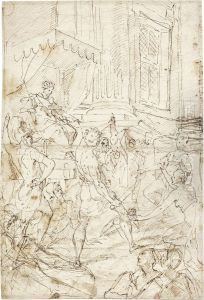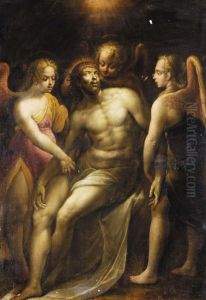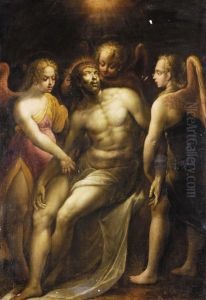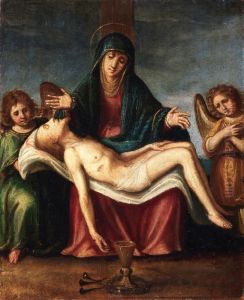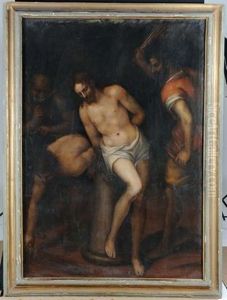Cesare Corte Paintings
Cesare Corte was an Italian painter and architect of the late Renaissance period, born in 1554 in Genoa, Italy. He was a prominent figure in the Genoese art scene, which during the 16th and 17th centuries was marked by a remarkable flourishing of artistic talent and patronage. Corte's life and work were deeply influenced by the cultural and artistic milieu of Genoa, which at the time was a significant maritime republic with strong economic and political ties throughout the Mediterranean and beyond.
Corte's artistic training is not well documented, but it is believed that he was a pupil of Luca Cambiaso, one of the leading Genoese painters of the time. Cambiaso's influence is evident in Corte's style, particularly in his early works, which exhibit a certain Mannerist quality characterized by elongated figures and a dramatic use of light and shadow. However, as his career progressed, Corte developed a more naturalistic approach, likely influenced by the growing trend of Baroque art that was spreading throughout Italy.
Although primarily known as a painter, Corte was also an accomplished architect. He contributed to the design of several buildings in Genoa, demonstrating a versatile talent that was in high demand among the city's elite patrons. His architectural works reflect the transition from the Renaissance to the early Baroque style, with an emphasis on grandeur and spatial dynamics.
Corte's paintings, many of which were religious in nature, were commissioned for churches and private patrons in Genoa and its surroundings. His altar pieces and frescoes often depict scenes from the life of Christ, the Virgin Mary, and the saints, imbued with a sense of devotion and an attention to detail that was appreciated by his contemporaries. Corte's ability to convey narrative and emotion made his work popular during his lifetime.
Despite his success, there is a relative scarcity of information about Corte's personal life, and many of his works have been lost or remain unidentified. Nevertheless, his contributions to the Genoese art scene have been recognized by art historians, and his surviving works continue to be studied for their artistic merit and historical significance.
Cesare Corte passed away in 1613 in Genoa. His legacy lives on through the works that remain and through the influence he exerted on subsequent generations of Genoese artists. His life and career reflect the vibrant artistic culture of Genoa during a period when the city was at the height of its power and influence.
